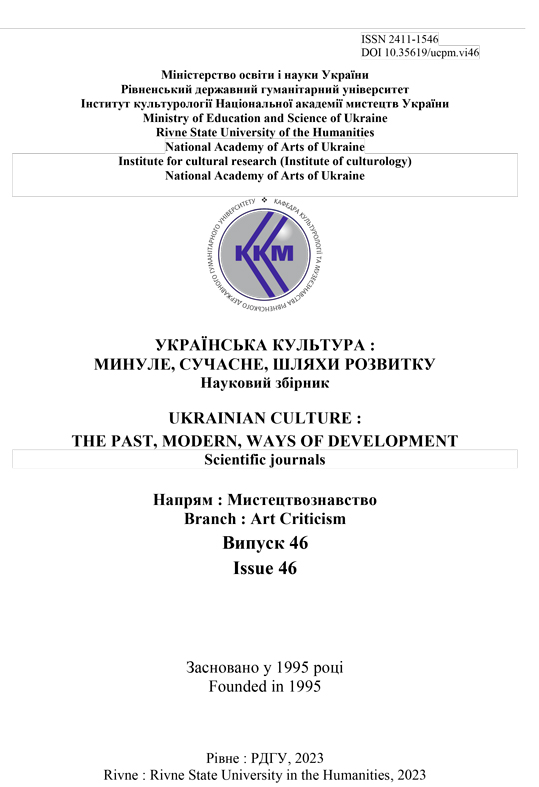PARALLELS BETWEEN FRENCH AND ENGLISH COURT GENRES IN THE FIRST HALF OF XVII CENTURY
DOI:
https://doi.org/10.35619/ucpmk.vi42.551Keywords:
сourt Masque, French ballet, dance, collective form of art, borrowing and creatively used.Abstract
The purpose of the article is to identify the points of interaction between the English court Masque and the French court ballet and highlight the goals and objectives of these musical theatrical performances in England and France at the end of the 16th and the first half of the 17th centuries. Research methodology lies in the field of application of methods of analysis and synthesis, systematization of facts, comparison, and generalization of research results. The system-historical method allowed us to consider the French court ballet and draw a parallel with the English court Masque. The comparative method helped to reveal the similarities of the mentioned musical-theatrical performance. The novelty of the study lies in the understanding of the origins of the interaction of the English court genre of Masque with the French continental culture.
Conclusions. The French court ballet of the 16th century becomes the starting point for creating scenarios for the English mask, embodying the sacred dance motifs of Greco-Byzantine theatrical thinking. The interaction of the English Masque with the culture of entertainment of the highest aristocratic circles in France is based on the pivotal moment of the implementation of the sacral and ritual beginning of the dance. The gestures of the hands and the plasticity of the body demonstrated the «flight of the soul», a spiritual and symbolic ideal orientation that maintained the harmony of relations between the aristocracy as an elite representative of the nation and the state, and, in fact, the people. The saturation of English court Masques with dance numbers depended not so much on the artistic merits of the choreographic skills of the participants, but on belonging to the highest aristocratic state. English Masques and French ballet were a means of aristocratic unity, demonstrating the highest intellectual abilities. Fading away, these genres evolved into new generally recognized forms of high art.
Grandiose musical and theatrical performances served as political and social content. Therefore, the court entertainment of France and England cannot be attributed to high art, but they certainly belong to the cultural achievements of mankind.
The practical significance of the problem lies in the field of studying the evolution of the English court Masque into full-fledged operas, savoy operas, and musicals.




